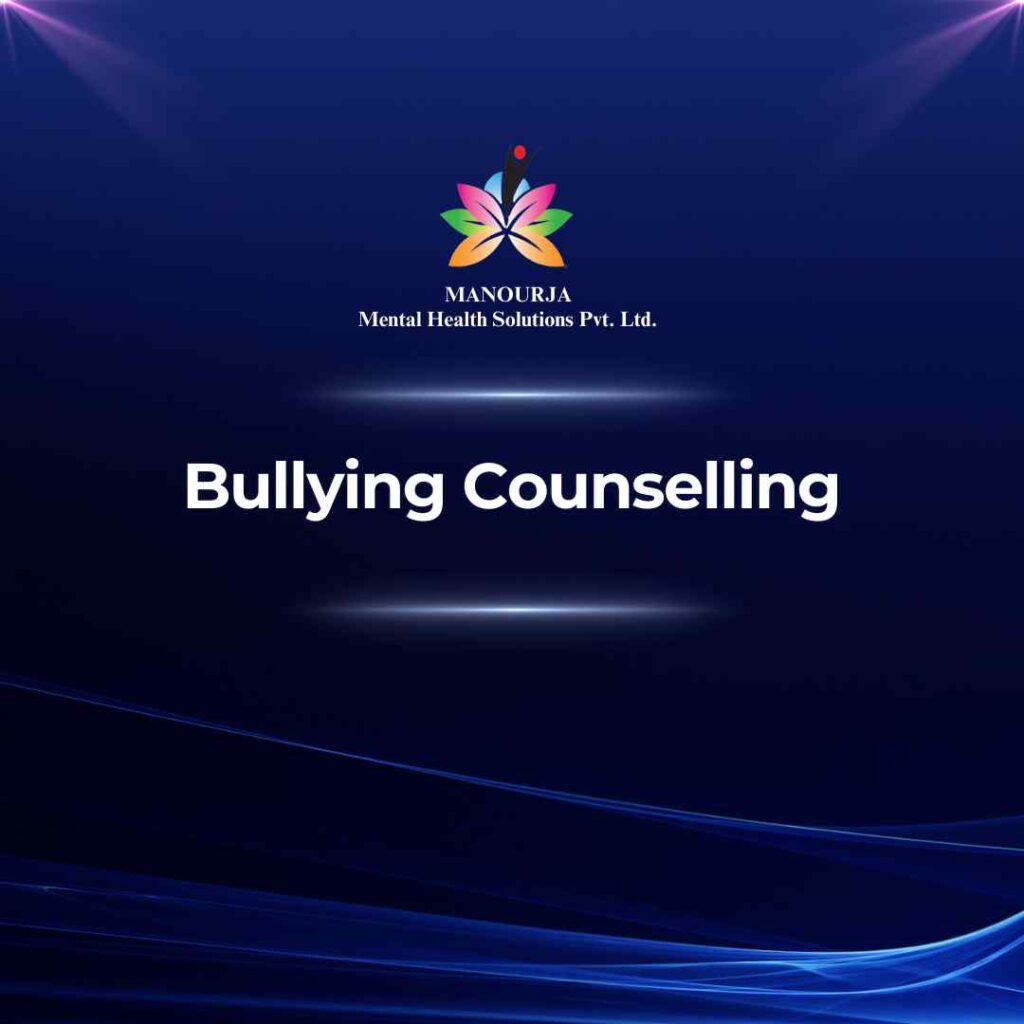Bullying Counselling

Bullying is aggressive behavior that involves an imbalance of power or strength. It can be physical, verbal, relational, or carried out through digital means (cyberbullying). This behavior is typically repeated, or has the potential to be repeated, over time. Both those who are bullied and those who bully others may experience serious, lasting problems as a result.
Common Symptoms of Being Bullied Include
- Withdrawal: Avoiding social situations, school, or group activities.
- Changes in Mood: Increased sadness, anxiety, or anger that seems out of character.
- Physical Symptoms: Unexplained injuries, frequent headaches or stomachaches, changes in eating and sleeping patterns.
- Academic Problems: Drop in grades, loss of interest in schoolwork, or frequent absences.
- Low Self-Esteem: Feelings of worthlessness or being overly critical of oneself.
- Behavioral Changes: Some children may turn to bullying others as a response to being bullied themselves.
For those who bully, symptoms might include increased aggression, trouble with the law, and substance abuse.
How Counselling Effectively Treats Bullying
Counselling offers support and intervention strategies for both victims of bullying and those who bully, aiming to address the underlying emotional and behavioral issues and improve their interactions.
- For Victims: Counselling helps to restore self-esteem, develop coping strategies, and strengthen communication skills. Therapists might use CBT to manage anxiety and depression resulting from bullying.
- For Bullies: Counselling seeks to understand the reasons behind aggressive behavior, teach empathy, and develop healthier interaction patterns. This might involve addressing family issues or personal insecurities.
- Group Therapy: Useful for both victims and bullies, providing a safe environment to explore personal experiences with peers, learn from others’ perspectives, and practice social skills.
- Family Therapy: Often necessary to ensure that the home environment supports positive changes. For victims, it provides family members with tools to offer effective support. For bullies, it addresses possible family dynamics contributing to aggressive behavior.
- Conflict Resolution and Social Skills Training: Teaches effective methods for handling disputes and enhances interpersonal skills to foster respect and understanding among peers.
Steps Followed in MANOURJA for Counselling of People with Bullying
- Initial Assessment: Conduct a thorough assessment to understand the dynamics of the bullying, including the roles played (victim, bully, or both), frequency, and areas of impact (social, academic, emotional).
- Goal Setting: Work with the client to establish clear and attainable goals, which may involve reducing victimization, changing aggressive behaviors, or improving social skills.
- Development of a Personalized Treatment Plan: Craft a treatment strategy that addresses specific needs, employing appropriate therapeutic approaches like CBT, group therapy, or family therapy.
- Regular Counselling Sessions: Engage in ongoing sessions that focus on the therapeutic goals, providing a space to discuss experiences, practice new skills, and track progress.
- Continuous Monitoring and Adjustment: Regularly review the effectiveness of the intervention, making necessary adjustments to ensure the approach remains aligned with the client’s needs.
Through Counselling, MANOURJA aims to empower individuals affected by bullying to overcome the impacts, create resilience, and encourage positive social interactions, thus improving quality of life and relationships.
“Each day brings new strength and fresh possibilities to rise above challenges.”
